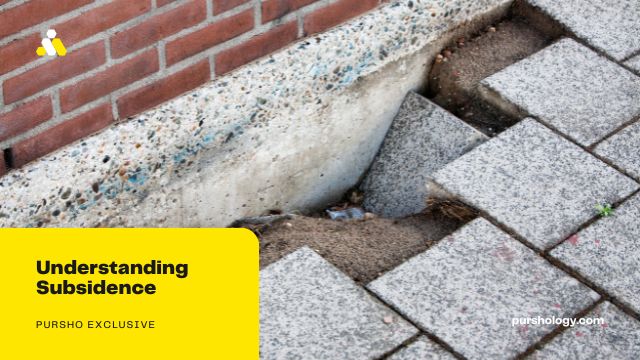Subsidence is a phenomenon that occurs when the ground surface level sinks due to the removal of underlying material or the addition of weight to the surface. This process can occur naturally or as a result of human activity. Understanding the causes and effects of subsidence is important for managing the land and resources in order to minimize its potential impacts. This paper provides an overview of subsidence, including its main causes, effects, and strategies for mitigating its impacts.
Mainmark offers state of the art technology to stabilise the ground beneath your home. Using resin injection ground stabilisation, they improve ground compaction. They can then raise and re-level sunken buildings, then add support to the ground for soil stabilisation to strengthen the foundation and stop the soil underneath and around the buildings slipping or moving.
What is Subsidence?
Subsidence is a process in which the ground surface level sinks due to the removal of underlying material or the addition of weight to the surface. This phenomenon can occur naturally or as a result of human activity. It is most common in areas with soft, unconsolidated sedimentary rocks, such as sandstone and limestone, which are prone to compaction and erosion. Subsidence can also occur in areas where underground mining is taking place, due to the removal of the supporting material. In addition, it can be caused by the artificial loading of land, such as when buildings are constructed on soft soil.
Causes of Subsidence
The main natural causes of subsidence are erosion and compaction. Erosion is the process of wearing away of the land surface due to the action of wind, water, or ice. Compaction is the process in which the grains of soil become more densely packed together, resulting in a decrease in the height of the land surface. In addition, subsidence can be caused by the removal of large amounts of material from underground. This is known as mining subsidence, and is typically associated with coal mining. Artificial loading of land, such as when buildings are constructed on soft soil, can also cause subsidence.
Effects of Subsidence
The effects of subsidence can be both physical and economic. Physically, subsidence can cause the land surface to become uneven, creating sinkholes or depressions in the ground. This can lead to instability and the potential for landslides and damage to buildings and infrastructure. Economically, subsidence can cause disruption to agricultural production, as well as damage to residential and commercial property. In addition, subsidence can reduce the availability of water, as it can cause streams and rivers to become blocked or diverted.
Strategies for Mitigating Subsidence
There are a number of strategies that can be used to mitigate the effects of subsidence. These include the use of geotechnical techniques such as soil stabilization, the use of retaining structures to support the ground surface, and the use of drainage systems to reduce water pressure on the ground surface. In addition, subsidence can be managed through the use of land zoning and planning regulations, as well as through the monitoring of subsidence-prone areas.
Conclusion
Subsidence is a phenomenon that can have serious physical and economic impacts. Understanding the causes and effects of subsidence is important for managing the land and resources in order to minimize its potential impacts. This paper has provided an overview of subsidence, including its main causes, effects, and strategies for mitigating its impacts.







